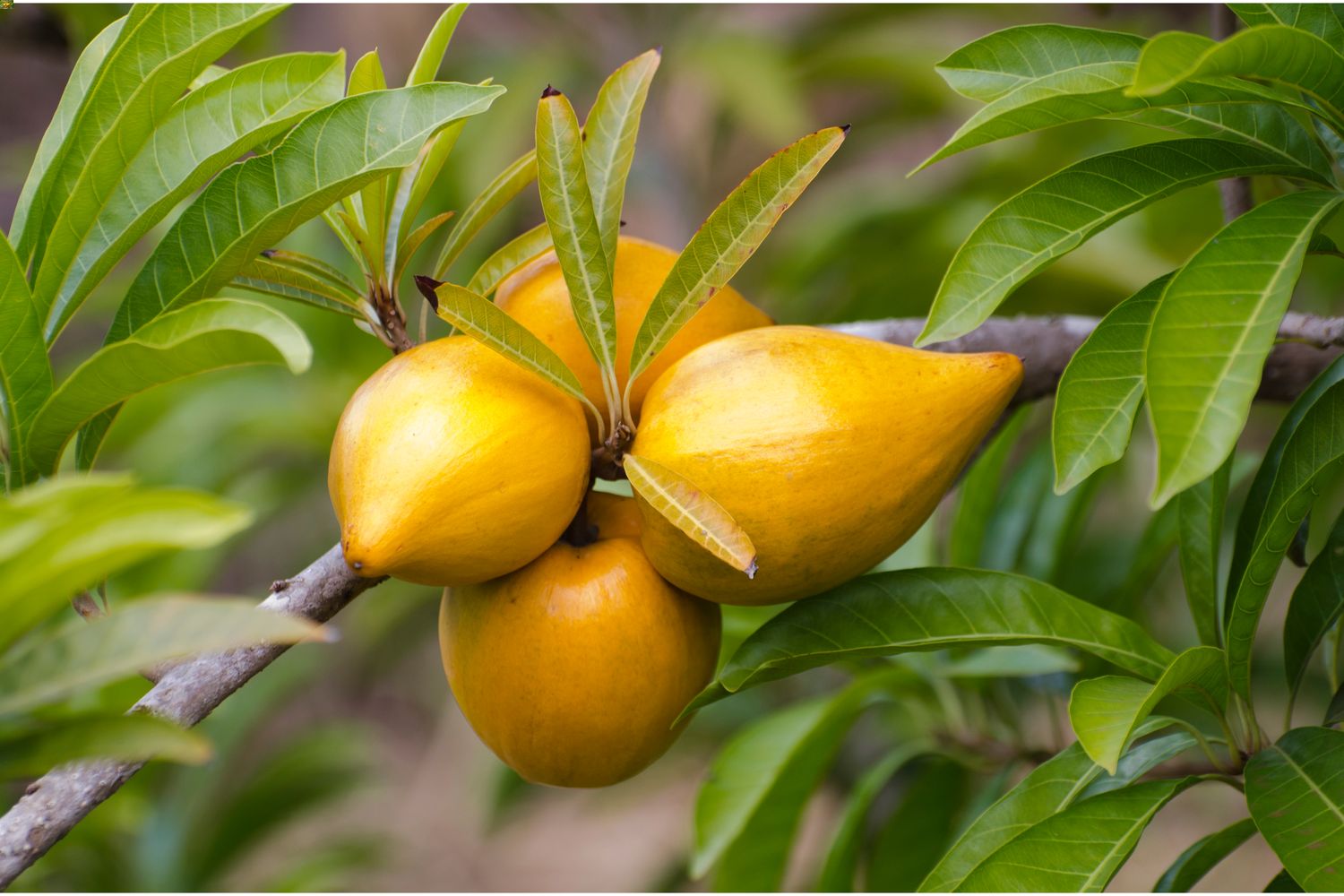
Pouteria campechiana, commonly known as the canistel or eggfruit, is a tropical fruit that often flies under the radar. Native to Central America, this vibrant yellow fruit boasts a unique flavor and texture, often compared to a cooked sweet potato or pumpkin. But what makes the canistel truly fascinating? Did you know that it’s not just a tasty treat but also packed with nutrients? From its rich history to its surprising health benefits, there’s a lot to learn about this exotic fruit. Whether you're a foodie, a gardener, or just curious, these 25 facts will give you a fresh perspective on the canistel. Ready to dig in?
What is Pouteria campechiana?
Pouteria campechiana, also known as the canistel or eggfruit, is a tropical fruit native to Central America. This fruit is known for its bright yellow flesh and unique flavor, often compared to a cooked sweet potato or pumpkin. Let's dive into some fascinating facts about this intriguing fruit.
-
Scientific Classification: Pouteria campechiana belongs to the Sapotaceae family, which includes other well-known fruits like sapodilla and mamey sapote.
-
Common Names: Besides canistel and eggfruit, it is also called yellow sapote in some regions.
-
Origin: This fruit is native to southern Mexico, Belize, Guatemala, and El Salvador.
-
Tree Size: The canistel tree can grow up to 10 meters tall, making it a medium-sized tropical tree.
-
Fruit Shape: The fruit can be oval, oblong, or spindle-shaped, varying in size from 7 to 12 centimeters long.
-
Skin Texture: The skin of the canistel is smooth and thin, usually bright yellow or orange when ripe.
-
Flesh Consistency: The flesh is dense and creamy, often compared to the texture of a hard-boiled egg yolk.
Nutritional Benefits of Pouteria campechiana
This fruit is not just tasty but also packed with nutrients. Here are some of the health benefits you can gain from consuming canistel.
-
Rich in Vitamins: Canistel is high in vitamins A and C, essential for maintaining good vision and a strong immune system.
-
Dietary Fiber: It contains a good amount of dietary fiber, which aids in digestion and helps maintain a healthy gut.
-
Low in Fat: This fruit is low in fat, making it a healthy snack option for those watching their calorie intake.
-
Antioxidants: The fruit is rich in antioxidants, which help combat free radicals in the body.
-
Minerals: Canistel provides essential minerals like calcium, phosphorus, and iron, important for bone health and oxygen transport.
Culinary Uses of Pouteria campechiana
Canistel is versatile in the kitchen, lending itself to various culinary applications. Here are some ways you can enjoy this fruit.
-
Raw Consumption: The simplest way to enjoy canistel is by eating it raw. Just peel and eat!
-
Smoothies: Blend canistel with milk or yogurt for a creamy, nutritious smoothie.
-
Desserts: Use it in desserts like pies, custards, and ice creams for a unique flavor twist.
-
Baking: Canistel can be used as a natural sweetener in baking, replacing some of the sugar in recipes.
-
Jams and Preserves: Make jams or preserves to enjoy the fruit's flavor year-round.
Growing Pouteria campechiana
Interested in growing your own canistel tree? Here are some tips to get you started.
-
Climate: Canistel thrives in tropical and subtropical climates, requiring warm temperatures and plenty of sunlight.
-
Soil Requirements: The tree prefers well-drained, sandy loam soil but can adapt to various soil types.
-
Watering: Regular watering is essential, especially during dry periods, but avoid waterlogging the soil.
-
Propagation: Canistel can be propagated from seeds or grafting. Seeds should be planted fresh for the best results.
-
Pest Control: Watch out for common pests like aphids and scale insects. Regular monitoring and organic treatments can help keep these pests at bay.
Cultural Significance of Pouteria campechiana
This fruit holds cultural importance in various regions where it is grown. Here are some interesting cultural facts.
-
Traditional Medicine: In some cultures, canistel is used in traditional medicine to treat ailments like diarrhea and skin infections.
-
Folklore: In Central American folklore, the canistel tree is often associated with fertility and prosperity.
-
Festivals: Some regions celebrate the harvest of canistel with local festivals, showcasing the fruit in various dishes and cultural performances.
The Final Scoop on Pouteria campechiana
Pouteria campechiana, or canistel, is more than just a tropical fruit. Its vibrant yellow flesh and unique taste make it a standout in the fruit world. Packed with vitamins A and C, it’s a healthy choice for those looking to boost their diet. The tree itself is quite hardy, thriving in various climates and producing fruit year-round. Whether you enjoy it fresh, in desserts, or as part of a savory dish, canistel offers versatility in the kitchen. Its rich history and cultural significance add to its charm, making it a fruit worth trying. So next time you see this bright yellow fruit, give it a go. You might just find a new favorite snack.
Was this page helpful?
Our commitment to delivering trustworthy and engaging content is at the heart of what we do. Each fact on our site is contributed by real users like you, bringing a wealth of diverse insights and information. To ensure the highest standards of accuracy and reliability, our dedicated editors meticulously review each submission. This process guarantees that the facts we share are not only fascinating but also credible. Trust in our commitment to quality and authenticity as you explore and learn with us.
